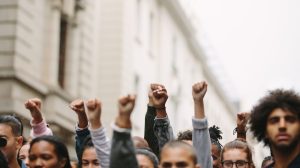An estimated 7 million children in the U.S. — or more than 6% of children overall — have some form of disability, but according to new data published by the Census Bureau, disabilities aren’t spread equally among the races. Instead, there are distinct racial divisions in childhood disability rates, with American Indian and Alaska Native children having the highest disability rates overall, especially in the American South and Northeast.
Anagha Srikanth of The Hill has reported that “disability is most prevalent among American Indian and Alaska Native children, followed by biracial children and then Black children, according to the study, which compared estimates from the 2019 American Community Survey (ACS) to the 2008 ACS. Asian, Native Hawaiian and other Pacific Islander children were least likely to have a disability, while both Hispanic and non-Hispanic white children fell in between.”
While they have detected the disparity in disabilities between races, Census officials have admitted they aren’t sure what may lie behind their finding — possibly attributing it to disparities in health care or “differences across cultures in how disability is perceived and understood may lead to differences in disability reporting.”
“What researchers do know is that once people arrive in the United States, access to health care is inequitable, which could account for the increase in disability prevalence among Asian and Hispanic children not seen in other populations,” Srikanth said.
In an interview with ABC’s Sara Yumeen, Regan Bergmark, an otolaryngologist at Boston’s Brigham and Women’s Hospital, said “there are decades of evidence that these particular racial and ethnic groups, especially American Indian, Native American groups and Black Americans, have poor access to care, and also may not have access to the same quality of healthcare services.”
Srikanth reported that “the inequity is perpetuated by both the monetary and nonmonetary costs associated with caring for children with disabilities, which the brief says can be ‘substantial.'”
According to Census officials, “children in poverty were more likely to have a disability than children above the poverty threshold in both 2008 and 2019, increasing ‘significantly’ in the decade in between.” Their report also suggested that the rate of disability could be even higher, considering “the fact that diagnoses may be more readily available to or more sought out by certain groups in the United States, relative to others.”
“A lack of access to high-quality care can be a major contributor to the higher rates of disability,” added Yumeen. “Native American children and their families have historically had inadequate prenatal care, higher rates of premature birth and exposure to environmental stressors. Some live in rural or remote communities where they may experience difficulty with transportation to appointments and higher wait times. Finding primary care providers and pediatricians who understand the unique cultural needs of these children can also pose a challenge.”
Related: For more recent diversity and inclusion news, click here.


















